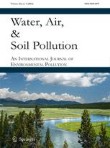|
Anapafseos 5 Agios Nikolaos 72100,Crete,Greece,00302841026182,00306932607174,alsfakia@gmail.com
Blog Archive
- ► 2022 (3010)
- ► 2021 (9899)
-
▼
2020
(4138)
-
▼
December
(1380)
-
▼
Dec 20
(79)
- 3D simulation of radiographic projections to test ...
- The role of Treg subtypes in glomerulonephritis
- Estimation of the Prevalence of Progressive Fibros...
- Treatment of tumor thrombus in the superior mesent...
- Biliary atresia in a preterm and extremely low bir...
- The diagnostic performance of quantitative mapping...
- A different technique in gasless, laparoendoscopic...
- Quality assessment of a clinical next-generation s...
- Parathyroid carcinoma with sarcomatoid differentia...
- Do bleaching gels affect the stability of the mask...
- Dual-energy CT collagen density mapping of wrist l...
- An update on non-thyroidal illness syndrome
- Controlling Draft Interactions Between Quadcopter ...
- Enarodustat: First Approval
- Ta 2 O 5 NTs-TiO 2 nanodots heterostructure photoc...
- Eliciting Preferences for HIV Prevention Technolog...
- Geriatric polytrauma patients should not be exclud...
- The Japan Society for Surgical Infection: guidelin...
- Dermatofibrosarcoma Protuberance of Male Breast A ...
- Quality of care in surgical/interventional vascula...
- Fertilization Value of Biosolids on Nutrient Accum...
- The albedo loss from the melting of the Greenland ...
- 2DxoPod - A Modular Robot for Mimicking Locomotion...
- Vision-Based Imitation Learning of Needle Reaching...
- Indicators and monitoring systems for urban climat...
- Safety of N -Acetylcysteine at High Doses in Chron...
- Pharmacokinetic Interaction Between Telmisartan an...
- Efficacy and Safety of Intravitreal Aflibercept In...
- Intravitreal Aflibercept in Japanese Patients with...
- A role for primary cilia in coral calcification?
- Extracranial dose and the risk of radiation-induce...
- Impact of bridging thrombolysis on clinical outcom...
- Feasibility and possible value of quantitative sem...
- Adsorption of Methyl Blue onto Activated Carbon De...
- Effectiveness of low-level laser therapy on recove...
- An update on the pathogenesis of Hashimoto’s thyro...
- The Roles of Insulin-Like Growth Factor Binding Pr...
- Efficacy of Tofacitinib in the Treatment of Psoria...
- Time to Treatment Discontinuation in German Patien...
- First-in-Man Safety, Tolerability, and Pharmacokin...
- Updated Overall Survival in a Randomized Study Com...
- A virtual reality-based data analysis for optimizi...
- A new platform for laparoscopic training: initial ...
- Outcomes of endoscopic treatment for malignant bil...
- Does three-dimensional surgery affect recurrence p...
- Comparison of peroral endoscopic myotomy between d...
- Totally laparoscopic anatomic S7 segmentectomy usi...
- Development and validation of machine learning mod...
- Transpancreatic biliary sphincterotomy for biliary...
- An advanced RFID-based system to localize gastric ...
- Salivary Glands and Periodontal Changes in a Popul...
- Minimally invasive procedure for removal of infect...
- Risk for developing perianal abscess in type 1 and...
- Επείγουσα ειδοποίηση πληροφοριών του ΠΟΥ για χρήστ...
- Calcium signaling: breast cancer’s approach to man...
- What Are the Preferences of Patients With Rheumato...
- Development of a Patient-Reported Outcome Measure ...
- Clinical and Economic Burden of Pediatric Mild-to-...
- Two-Year US Pharmacovigilance Report on Brodalumab
- Identification of characteristics, risk factors, a...
- Effects of Heat and Chemical Pretreatments of Bana...
- Clinical and radiological outcome after anterior c...
- Surgical site infections after distal radius fract...
- The faster the better? Time to first CT scan after...
- Influence of Biochar Particle Size and Concentrati...
- Critical Ischemia
- How to Assess a Patient for HSCT
- The Ncoa7 locus regulates V-ATPase formation and f...
- Autophagy and the endolysosomal system in presynap...
- Anatomical basis of erector spinae plane block: a ...
- Topical Probiotics in Dermatological Therapy and S...
- Surgical management of symptomatic cavum septum pe...
- Possible tics diagnosed as stereotypies in patient...
- Role and function of Chondrostereum purpureum in b...
- Temporal effects of barbiturate coma on intracrani...
- Naltrexone’s Impact on Cancer Progression and Mort...
- Pharmacokinetics and Bioequivalence of Cefprozil f...
- Targeted Use of Prednisolone with Intravenous Immu...
- Walking the line: mechanisms underlying directiona...
-
▼
Dec 20
(79)
-
▼
December
(1380)
- ► 2019 (2429)
Αλέξανδρος Γ. Σφακιανάκης
Sunday, December 20, 2020
Adsorption of Methyl Blue onto Activated Carbon Derived from Red Oak ( Quercus rubra ) Acorns: a 2 6 Factorial Design and Analysis
Subscribe to:
Post Comments (Atom)



No comments:
Post a Comment